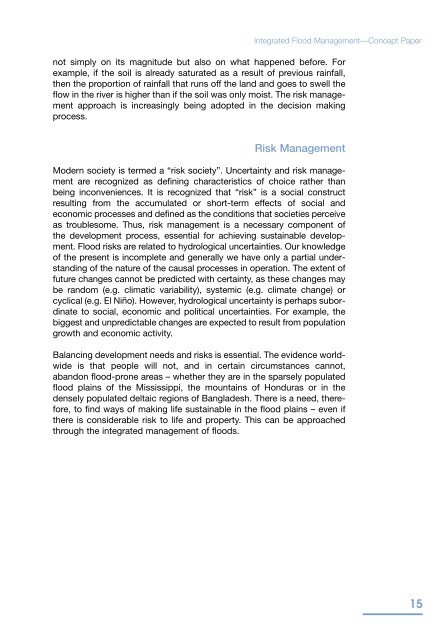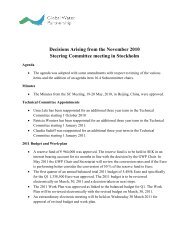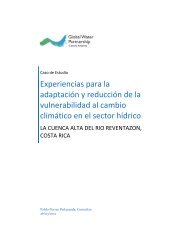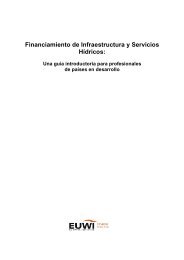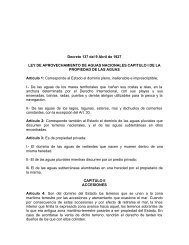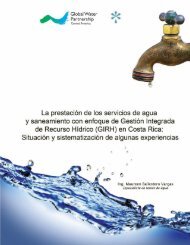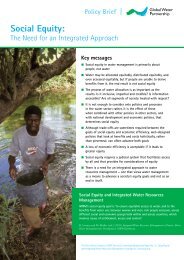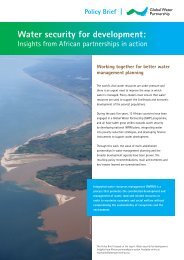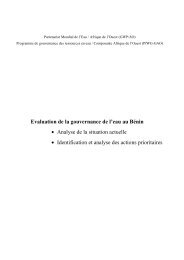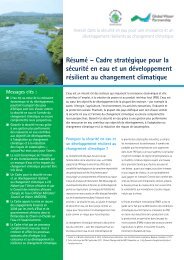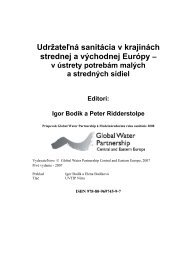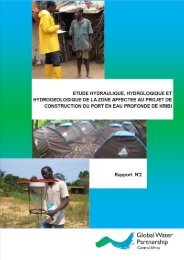Integrated Flood Management. Concept Paper - Cap-Net
Integrated Flood Management. Concept Paper - Cap-Net
Integrated Flood Management. Concept Paper - Cap-Net
You also want an ePaper? Increase the reach of your titles
YUMPU automatically turns print PDFs into web optimized ePapers that Google loves.
<strong>Integrated</strong> <strong>Flood</strong> <strong>Management</strong>—<strong>Concept</strong> <strong>Paper</strong><br />
not simply on its magnitude but also on what happened before. For<br />
example, if the soil is already saturated as a result of previous rainfall,<br />
then the proportion of rainfall that runs off the land and goes to swell the<br />
flow in the river is higher than if the soil was only moist. The risk management<br />
approach is increasingly being adopted in the decision making<br />
process.<br />
Risk <strong>Management</strong><br />
Modern society is termed a “risk society”. Uncertainty and risk management<br />
are recognized as defining characteristics of choice rather than<br />
being inconveniences. It is recognized that “risk” is a social construct<br />
resulting from the accumulated or short-term effects of social and<br />
economic processes and defined as the conditions that societies perceive<br />
as troublesome. Thus, risk management is a necessary component of<br />
the development process, essential for achieving sustainable development.<br />
<strong>Flood</strong> risks are related to hydrological uncertainties. Our knowledge<br />
of the present is incomplete and generally we have only a partial understanding<br />
of the nature of the causal processes in operation. The extent of<br />
future changes cannot be predicted with certainty, as these changes may<br />
be random (e.g. climatic variability), systemic (e.g. climate change) or<br />
cyclical (e.g. El Niño). However, hydrological uncertainty is perhaps subordinate<br />
to social, economic and political uncertainties. For example, the<br />
biggest and unpredictable changes are expected to result from population<br />
growth and economic activity.<br />
Balancing development needs and risks is essential. The evidence worldwide<br />
is that people will not, and in certain circumstances cannot,<br />
abandon flood-prone areas – whether they are in the sparsely populated<br />
flood plains of the Mississippi, the mountains of Honduras or in the<br />
densely populated deltaic regions of Bangladesh. There is a need, therefore,<br />
to find ways of making life sustainable in the flood plains – even if<br />
there is considerable risk to life and property. This can be approached<br />
through the integrated management of floods.<br />
15


